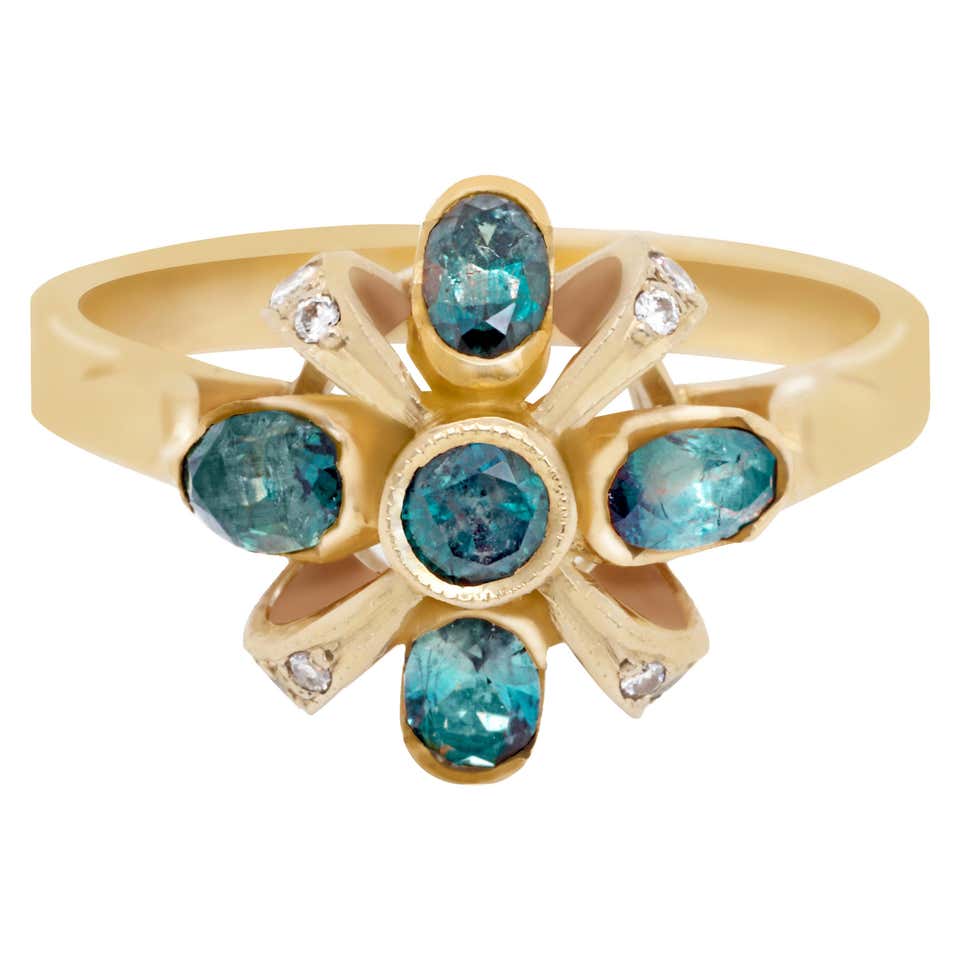Summer is here, thank goodness! Finally we can enjoy the outdoors, relish in our summer frocks and attend a variety of evening soiree’s and barbecues under the apricot sun. Not to mention, can you believe that the year is halfway through already?
If our description of summer is getting you all hot under the collar, then you can cool down with the June Birthstones, Pearl, Moonstone and Alexandrite. Paired together for their similar luminescence and shine, both Pearl and Moonstone are believed to be in tune with the moon and have been equated with the ancient moon goddesses Diana and Selene - how magical.

Alexandrite is a vibrant bluish-green gemstone by day and a purplish red by night and is part of the Chrsyoberyl family. A distinctive gemstone that is just perfect for a loved one who loves unusual gemstones!
So, without further ado, let's find out more about these ethereal gems!
History and Significance of Pearls
For centuries Pearls have captivated the attention of cultures across the globe. From the Ancient Egyptians to the Ancient Chinese, many have fallen in love with this prestigious gemstone. The Persian Gulf was the main source for Pearls from 2300 BC
Intertwined in a multiplicity of ancient legends, Pearls were sacred gems that were reserved for royalty and the upper classes in society. In ancient religions Pearls were symbolic of the moon possessing magical properties. It is believed that Pearls were presented as gifts to Chinese royalty as early as 2300 BC. In fact, an ancient Chinese legend believed that black Pearls grew within the head of the dragon. What’s more, the ancient Japanese allegedly believed that Pearls were the tears of mythical creatures like nymphs, mermaids and angels. These mystical associations and beliefs were also shared by the ancient Persians who believed that Pearls were the product of a frightening storm, where both thunder and lightening had collided.
In ancient Egypt, Cleopatra wasn’t just captivated by Emeralds, she was in love with Pearls too. Allegedly, Egpytian royals had mother-of-pearl decorated buildings and jewellery and even had cosmetics made from ground up Pearls giving them an undeniable sheen and shimmer.

In ancient Greece and Rome, oysters were seen as symbols of love with the belief that both Aphrodite and Venus emerged from an oyster shell.

What’s more, in ancient Rome, Julius Caesar passed a law limiting Pearls to ruling classes. Caesar himself was believed to be a great connoisseur of Pearls, and he could guess their value just by weighing the Pearls within his palms. Caeser allegedly gave a large black single Pearl to his favourite mistress Servilia, which historians believe would have cost around 1.5 billion dollars.
In the Byzantine and Medieval period, Pearls were favoured amongst royalty and ecclesiastical members. Pearls were widely incorporated into jewellery, like these Byzantine earrings below at the Metropolitan Museum of Art. What’s more, Mother of Pearl was widely used for liturgical and devotional saint intaglios.


Byzantine Gold Filigree Cross with Pearl Centre, c.1200-1400, Source - The Metropolitan Museum of Art
Their luminescence and natural origins have contributed to the main belief that Pearls represented purity and fertility. A stone that was appreciated and used in excess in Queen Elizabeth I’s portraits and it was the earring of choice for Johanne Vermeer’s most famous piece Girl with A Pearl Earring.


In the 16th and 17th centuries South Sea Pearls were discovered by western explorers and in the 19th century the demand for Pearls was so high that oysters began dying out. No longer exclusive to royalty, Pearls were the gem du jour of the Victorian period, and the rise of the middle classes with extra disposable income meant they quickly became a status symbol for any with money to burn.

Pearls ethereal appearance made them a favoured gemstone for Art Nouveau creations. The natural curvature and provenance of Pearls resonated perfectly with the whimsical feminine designs. This is also where Baroque Pearls came into fashion, especially amongst the Liberty of London arts and crafts movement.

The fussy feminine style of the Edwardian period embraced Pearls in all of their frippery and excess. From layered Pearl necklaces to rings, brooches, hat pins and pendants, Pearls were essentially everywhere. Not to mention the rise of cultured Pearls meant they were accessible from a variety of price points.

Silver and Gold Blister Pearl Brooch, c.1900, Charles Ashbee, Source - The Victoria and Albert Museum
Synthetic Pearls and costume Pearls were embraced in the 1920’s to accord with the new futuristic way of thinking. Famous photographs of fashionistas wearing long pearl necklaces with their short bobbed hair. After the economic depression, many wanted cheap alternatives which led to the rise of imitation Pearls created from glass and plastic. What’s more, this is was a time when Hollywood stars started to change and shape fashion trends, with many actresses wearing a short pearl collar necklace.
This period of favour for Pearls fell in the 1970s, 80s and 90s. The hippie counter culture of the 70’s abhorred Pearls for their harm of oysters and the synthetic imitation pieces. On the other hand, in the 80s and 90s, Pearls became synonymous with conservative upper class femininity and the numerous subcultures and their images just didn’t fit with Pearls. What’s more, costume pearls started to be seen as cheap.
The rise of the millennial generation in the 2010’s led to Pearls being heavily desired once again. Yet, this generation rejected the smooth symmetrical pearl and opted for the allusive baroque shapes. Dubbed the “cool girl pearl” by American Vogue, you can easily find imitation and cultured Pearls on necklaces, hair clips, rings and other accessories.

Contemporary Freshwater Pearl Earrings, Source - Pinterest
History and Significance of Moonstones
Moonstones magical lore originated in the ancient world, where both the ancient Romans and ancient Greeks associated the stone with their moon goddesses Diana and Artemis. In fact, when the Ancient Greeks found the stone, its beauty inspired them to combine the name of their goddess of love “Aphrodite” and goddess of the moon “Selene” to name it “Aphroselene”.
This idea that Moonstones are also connected love meant that it accrued further associations and beliefs. Notably, it was believed to be an aphrodisiac, and when worn by two people, it will help them fall in love or repair any relationship issues.

7th Century Frankish Moonstone Brooch, Source - The Metropolitan Museum of Art
What’s more, the Moonstone is the sacred stone of India, believed to have been embedded within the forehead of Ganesh.
Moonstones also had a powerful connection with pagan cultures, especially in clairvoyancy and shamanism.

Femininity and Moonstones have also been equated with one another. There is a popular spiritual belief that the Moon and its tidal powers are linked to women’s emotions and menstrual cycles.
With this in mind, it was believed that Moonstones could help aid and balance a women’s hormones and emotions during this time. Further to this, it was believed that Moonstones could help enhance a women’s intuitive feminine energy, helping to relieve stress and strengthen their innate creative and maternal feelings. This is why today Moonstones are still incredibly popular in women’s jewellery and is also widely used in Feng Shui and Meditation.

Gold Moonstone Brooch, c.1975, Malcolm Appleby, Source - The Victoria and Albert Museum
Moonstones have been used in a variety of antique creations, yet it was favoured during the Arts and Crafts movement and Art Nouveau. Simply because creators were amazed that nature could produce something so beautiful! Moonstones featured heavily in the work of Rene Lalique, complementing his divine figures and pristine enamel.

Glass and Moonstone Pendant, c.1906, Rene Lalique, Source - R.Lalique
History and Significance of Alexandrite
An incredibly rare gemstone, the history of Alexandrite dates to its discovery in the 19th century. It is believed that the gemstone was first discovered in 1834 in the Emerald mines near the Tokovaya river in the Ural mountains. The legend was that it was discovered on the day that the emperor Alexander II came of age, and because it exhibited the principle colours of Imperial Russia, red and green, it became a national stone of Tsarist Russia.
The precise geological scenario in which natural Alexandrite needs to occur makes it an incredibly rare gemstone, so it certainly fetched a high price tag amongst the 19th century audience. This also means that the large majority of Alexandrite sold today is synthetic, and the best examples to see fine natural Alexandrite is in period jewellery.

Russian Alexandrite Soviet Era Ring, Source - 1stdibs
Because of its instant affinity with imperial Russia, this gemstone was favoured by the Russian nobility and amongst high jewellers including the master gemologist George Kunz of Tiffany, who bought such large deposits of the gemstone that it was sold by Tiffanys long after other jewellery brands were struggling to acquire the stone. The Ural mountain mines closed decades ago, so its incredibly hard to find Alexandrite of Russian origin, which means that it is highly valued in the trade. As mentioned before, some natural Alexandrite is found in Sri Lanka, Zimbabwe and Brazil, but the supply is unpredictable.

Antique Alexandrite Diamond Gold Snake Ring, Source - 1stdibs
In 1987, a new find of Alexandrite was found in Brazil in Hematita. This Alexandrite shows an attractive colour change from bright raspberry to bluish green, although, it is not as verdant as the Russian Alexandrite. Hematite Alexandrite is today the most common natural Alexandrite found on the market, and in some cases, it has shown chatoyancy which has not been found within the Russian Alexandrite.
As it was discovered within the 19th century, Alexandrite does not share the mythical lores that Pearls and Moonstones possess, however this does not mean that it doesn’t possess powerful significance.

Tiffany Alexandrite Gold Necklace, c.1914-1915, Source - Pinterest
It is believed that the stone will bring good fortune and luck into your future, and especially within Russia itself, it is considered to be a stone of very good omen, helping to balance your chakras and bringing you intuition, clarity and creative spirit. And, with its colour changing properties, it is a reminder that life may not always be what it seems!




